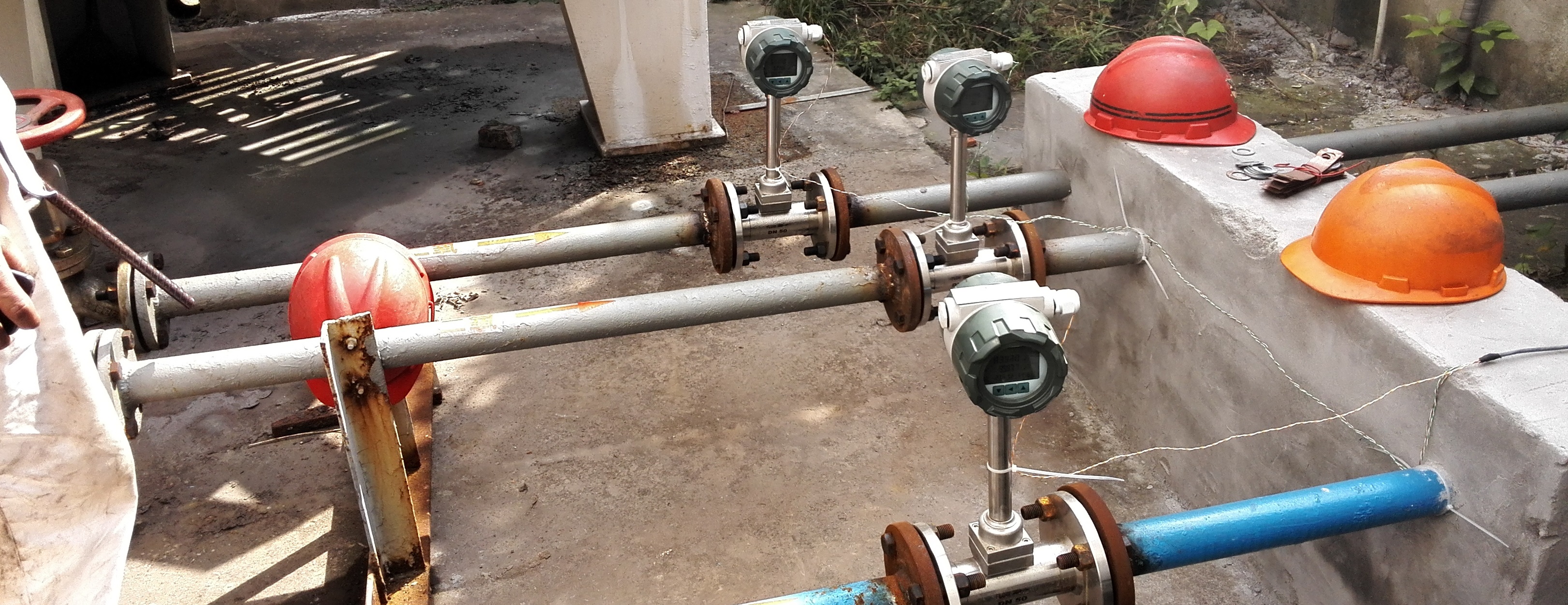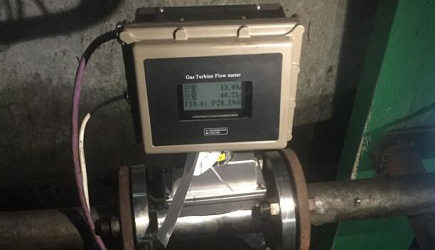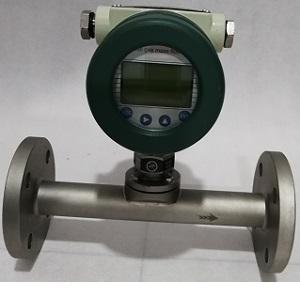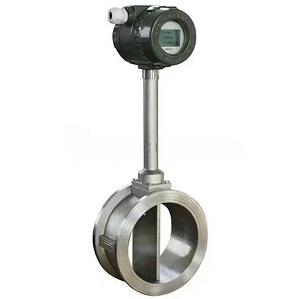Industrial air flow meters play a vital role in various applications, enabling precise measurement and control of air flow. In this article, we will explore three types of industrial air flow meters: thermal mass flow meters, vortex flow meters, and gas turbine flow meters. We will delve into their principles of operation, advantages, and disadvantages, highlighting their suitability for industrial air flow measurement.
Thermal Mass Flow Meter for Industrial Air Flow Measurement
Principle:
A
thermal mass flow meter operates on the principle of heat transfer. It measures the amount of heat required to maintain a constant temperature difference between two sensors—one heated and one unheated. As airflow passes over the heated sensor, it cools the sensor, and the power required to maintain the temperature difference is proportional to the mass flow rate of the air.
Advantages to use thermal mass flow meter for air measurement
-
Provides accurate and direct mass flow measurement, measurement air flow unit is Nm3/h.
-
Do not need temperature and pressure compensation for air flow measurement.
-
Suitable for various gases and gas mixtures, especially good for air flow measurement.
-
Low-pressure drop during measurement.
-
Wide turndown ratio for versatile applications.
-
Thermal mass flow meters can be made into insertion probe to suit large air pipe line.
-
Can ma made into high temperature air flow meter, max temperature can be 300°C, it is hot air flow meter.
-
Can be used for dirty air flow measurement.
Vortex Flow Meter for Industrial Air Flow Measurement
Principle:
A vortex flow meter utilizes the Von Kármán effect, where a bluff body (like a triangular prism) placed in the path of airflow generates vortices as the air passes by. Sensors detect the frequency of vortices shed, which is directly proportional to the air velocity and, subsequently, the flow rate.
Advantages to use vortex flow meter for air measurement
Low pressure drop, making it energy-efficient.
Robust design, suitable for industrial environments.
Low maintenance requirements.
Option with temperature and pressure integral sensor, it can realize air temperature, air pressure and air flow rate measurement at the same time.
Disadvantages:
Sensitivity to installation conditions and pipe disturbances.
Turndown ratio may be limited in some applications.
Calibration and accuracy can be affected by changes in fluid density and temperature.
Gas Turbine Flow Meter for Industrial Air Flow Measurement
Principle:
A
gas turbine flow meter operates based on the principle of a turbine rotor's rotation. Airflow causes the turbine blades to spin, and the rotational speed is directly proportional to the air velocity and, consequently, the flow rate.
Advantages to use turbine flow meter as industrial air flow meter
High accuracy and repeatability.
Wide range of flow rates can be measured.
Long lifespan with proper maintenance.
Disadvantages:
-
Prone to wear and tear, affecting long-term accuracy.
-
Requires a straight pipe section for optimal performance.
-
Higher pressure drop compared to other flow meter types.
In conclusion, each type of industrial air flow meter—thermal mass flow meter, vortex flow meter, and gas turbine flow meter—offers unique advantages and disadvantages. The selection of the appropriate flow meter depends on the specific requirements of the industrial application, considering factors such as accuracy, pressure drop, environmental conditions, and cost. Proper understanding and utilization of these flow meters are essential for efficient air flow measurement and optimal industrial processes. Welcome to contact SILVER Automation Instruments to send your industrial air flow measurement demand.



 Vortex air flow meter2019/05/10The vortex air flow meter has no movingparts as it works by the natural formation of vortices in the air stream. Itoperates over a wide range and is unaffected by factors ...view
Vortex air flow meter2019/05/10The vortex air flow meter has no movingparts as it works by the natural formation of vortices in the air stream. Itoperates over a wide range and is unaffected by factors ...view Thermal mass air flow meter2023/03/07Thermal Mass Flowmeters (TMF for short), originated in the United States,are generally used in gas and air measurement in environments with highaccuracy requirements, trade settlement, or difficult-to...view
Thermal mass air flow meter2023/03/07Thermal Mass Flowmeters (TMF for short), originated in the United States,are generally used in gas and air measurement in environments with highaccuracy requirements, trade settlement, or difficult-to...view Turbine air flow meter2020/02/14Air turbine flow meter overviewTurbine air flowmeter is almost independentof air density, pressure, temperature and other parameters when measuring thevolumetric air flow. view
Turbine air flow meter2020/02/14Air turbine flow meter overviewTurbine air flowmeter is almost independentof air density, pressure, temperature and other parameters when measuring thevolumetric air flow. view Digital rotameter air flow meter2023/10/30Rotameter: A Versatile Tool for Fluid Flow MeasurementRotameter, also known as a variable area flow meter, is an instrumental tool widely used in various industries to measure the flow rate of fluids,...view
Digital rotameter air flow meter2023/10/30Rotameter: A Versatile Tool for Fluid Flow MeasurementRotameter, also known as a variable area flow meter, is an instrumental tool widely used in various industries to measure the flow rate of fluids,...view Exhaust air flow sensor2022/07/06Exhaust air flow sensor may be used for the fresh air, dirty air, mix gas flow measurement, and also could be used in large pipeline or ducts or chimneys, such as HVAC air flow measurement, flue gas f...view
Exhaust air flow sensor2022/07/06Exhaust air flow sensor may be used for the fresh air, dirty air, mix gas flow measurement, and also could be used in large pipeline or ducts or chimneys, such as HVAC air flow measurement, flue gas f...view Air flow transmitter with 4-20mA output2019/09/25Digital air flowmeter with transmitter to output 4-20mA, it includes gas turbine flow meter,vortex flow meter, thermal mass flow meter, metal tube rotameter .etcview
Air flow transmitter with 4-20mA output2019/09/25Digital air flowmeter with transmitter to output 4-20mA, it includes gas turbine flow meter,vortex flow meter, thermal mass flow meter, metal tube rotameter .etcview